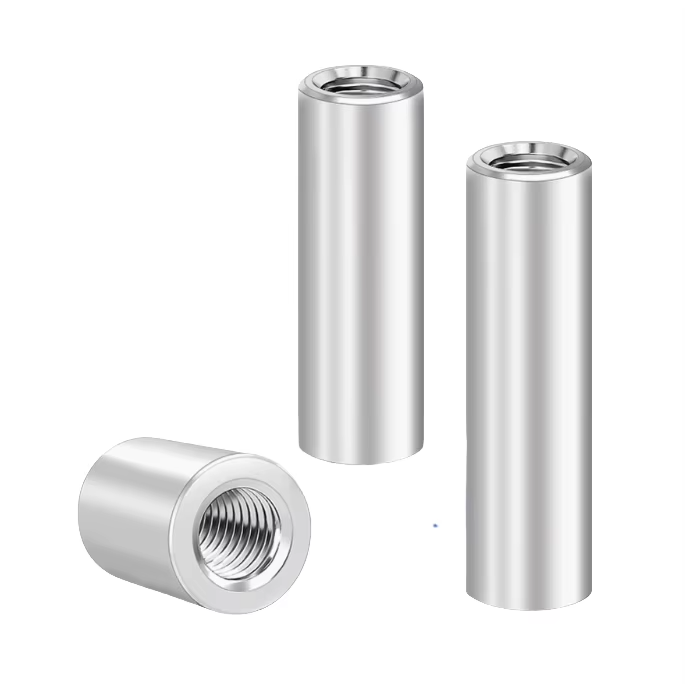Extension nut, is a threaded fastener for joining two male threads, most commonly a threaded rod,but also pipes. The outside of the fastener is usually hexagonal or round.
Hex Extension nut

Round Extension nut

- Common hexagonal nuts usually have a thread engagement length of only 1 times the thread diameter (for example, the height of an M12 nut is approximately 10–12 mm).
- Connecting nuts (such as long nuts) can have a thread length of up to 1.5 times, 2 times, or even 3 times the bolt diameter, allowing more thread teeth to participate in force transmission.
- Advantages: Load distribution, reduction of thread stress concentration, significantly improved tensile and shear resistance, especially suitable for high-load, high-vibration or easily loosened applications (such as bridges, heavy machinery, wind power equipment).
- Common nuts are mainly used for fastening, while coupling nuts are often employed as intermediate connectors.
- For instance, two threaded rods can be joined end to end through a long nut to extend their length (such as tie rods in construction or lead screws in transmission systems).
- Advantages: No welding or additional joints are required. The structure is simple, detachable, easy to maintain, and retains overall strength.
Although a single connection nut does not have anti-loosening function by itself, effective anti-loosening can be achieved when two ordinary nuts are tightened (double nut anti-loosening) or when a long nut is used in combination with a cotter pin or cotter pin hole design.
Some connection nuts are also designed with nylon locking rings, metal inserts or deformed threads (such as prevailing torque nuts), which can serve both connection and anti-loosening purposes.
Advantages: Suitable for vibration environments, reducing safety hazards caused by loosening.
During installation or maintenance, the long nut can be used as an adjusting nut to fine-tune the position of components (such as bearing clearance, lead screw pre-tightening, and support height). Its longer thread travel allows for more precise adjustment. Advantages: It improves installation accuracy and simplifies the commissioning process.
A longer thread meshing length enables a more even load distribution and reduces the peak force on individual thread teeth. Under dynamic loads or shock conditions, it can effectively delay the fatigue failure of the threads. Advantage: It extends the service life of the connecting parts and enhances the overall structural safety.
Feature: Common Hex Nut, Connecting Nut (e.g. Long Nut)
Thread Length: ≈ 1× diameter, 1.5× - 3× diameter or longer
Main Use: Fastening, Connecting, Extending, Adjusting, High-strength Fixing
Strength and Reliability: Average, Higher (especially in high-load/vibration environments)
Can be used for threaded rods: No, Yes (common use)
Anti-loosening ability: Requires additional measures, Can integrate anti-loosening design or use in combination
Installation space requirement: Small, Larger (longer axial length)